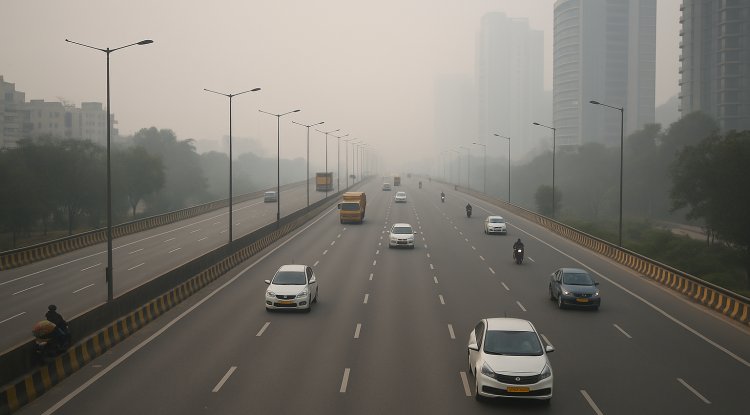Japan Records Hottest Day at 41.2°C Amid Ongoing Heatwave
Japan recorded a new national temperature high of 41.2°C in Hyogo as heatwaves continue across the country. Kyoto hit 40°C for the first time, while over 10,000 people were hospitalised for heatstroke. Authorities warn the heatwave will persist, raising concerns amid global climate change trends.

With a maximum temperature of 41.2°C, Hyogo in Japan's west was the most affected area on Wednesday. The temperature measured by the JMA exceeds the previous national record of 41.1°C in Hamamatsu and Kumagayo. Despite heatstroke warnings, temperatures in many parts of the country are still above 35°C at several observation points today, making it the warmest day on record.
The city of Kyoto achieved a historic milestone by reaching 40°C for the first time since official records were released, marking another extreme temperature. For the first time since 1880, Kyoto's weather observation points recorded unusually high temperatures. Officials from JMA stated that Wednesday's conditions were unprecedented in the monitoring of a city.
The heatwave in Japan did not cause any significant damage, but an alert was issued for tsunamis shortly after a magnitude 8.8 earthquake struck Far East Russia. Even so, due to the seismic activity and extreme temperatures, emergency services were on high alert.
On Tuesday, 322 out of the 914 observation points across the country measured temperatures at or above 35°C.. This number has reached its highest point since comparable data were made available in 2010. The temperature in Gujo, located within Gifu Prefecture, was the highest ever recorded out of 38 locations with 39.8°C.
The weather agency forecasts that the heatwave will continue, with a significant increase in temperatures expected to hit northern and eastern regions. Precautions have been recommended for the public, specifically to prevent heat-related illnesses. People are being urged by the authorities to stay indoors, use air-conditioning, and refrain from going outside in high temperatures.
Recent weeks have seen a significant increase in the number of people suffering from heatstroke. In total, 10,804 individuals were hospitalized for heat stroke last week—the most since 1998[clarification given]. The Fire and Disaster Management Agency confirmed that sixteen individuals have died from heat-related illnesses during the same time frame. Additionally, This compares with a record high of 10,053 hospitalisations recorded between 30 and 40.15pm. June and 6. July.
What is the reason behind Japan's aging population? The country's population is only slightly older than other countries, and its elderly residents are at risk of extreme heat. The authorities have advised individuals to stay alert during the heatwave and be mindful.
The extreme weather patterns that are being caused by global climate change are evident in recent temperature measurements.. Japan's joint hottest summer in 2023 marked the highest temperatures recorded in the nation't since records began 126 years ago. Changing temperatures during different seasons has put more pressure on infrastructure, agriculture, and public health systems.
The global trends are also being observed in Japan. With temperatures above 40°C in several Western European countries, June was the hottest on record. Spain and Portugal encountered high temperatures of up to 46°C on the surface, resulting in heatwaves across much of the continent. According to the Copernicus Climate Change Service (C3S), climate change has caused an increase in average temperatures during these events by up to 4°C, significantly exacerbating heat-related risks.
Heat stress is being experienced more frequently in urban areas...[note]. Millions of people across Europe and Asia have been exposed to dangerous temperatures during long-term heatwaves, according to health experts. These events are expected to become more common and severe with the increase in urbanisation combined with climate change.
Both Japanese authorities and international observers are constantly monitoring the situation in Japan.' Despite the ongoing availability of updates and temperature warnings, the JMA is expected to continue its efforts in reducing the pressure on emergency services and healthcare facilities.
The country is implementing public awareness campaigns to improve heat resistance. The list comprises guidance on dehydration, early identification of heat exhaustion, and emergency response. The absence of home air conditioning is prompting local governments to establish cooling centres and promote the use of public facilities.
Unless global efforts are strengthened to reduce greenhouse gas emissions and modify infrastructure to cope with it, environmentalists predict that temperatures will rise significantly in the coming years.
The authorities have cautioned Japanese citizens to stay alert, avoid unnecessary outdoor exposure, and prioritize health and safety during the long heatwave. Government officials have stressed the need for air-conditioned rooms and a close monitoring of elderly or vulnerable individuals.
The latest statistics indicate that climate change is causing immediate and lasting effects on everyday life, as well as public safety, rather than being isolated events. Besides Japan, it is the world's first demonstration of how rising temperatures affect both national and regional levels.
Source:
© 2025.
AFP | Edited by Andrew Zinin.
What's Your Reaction?

















